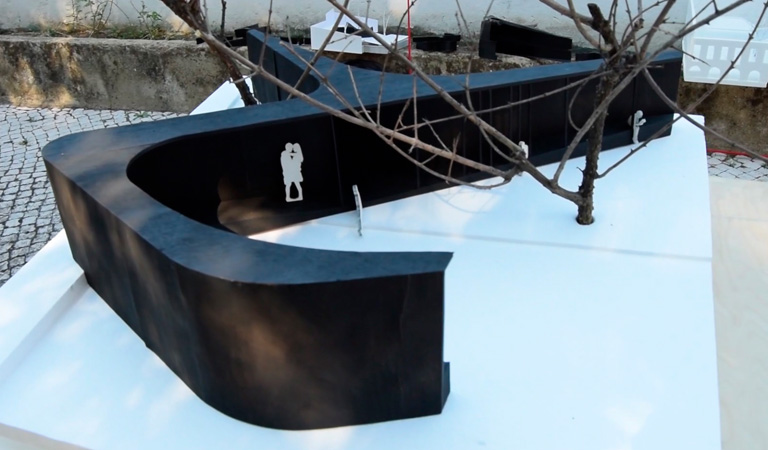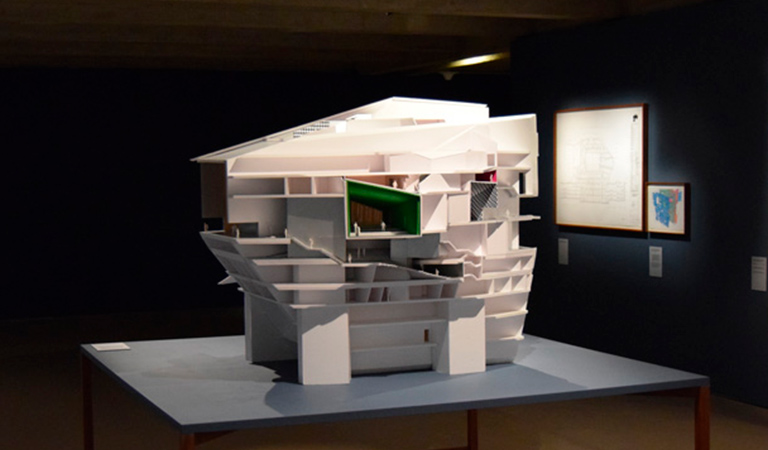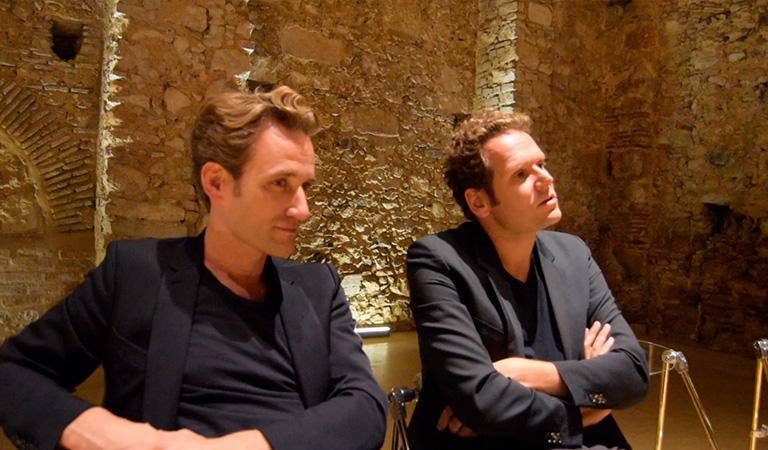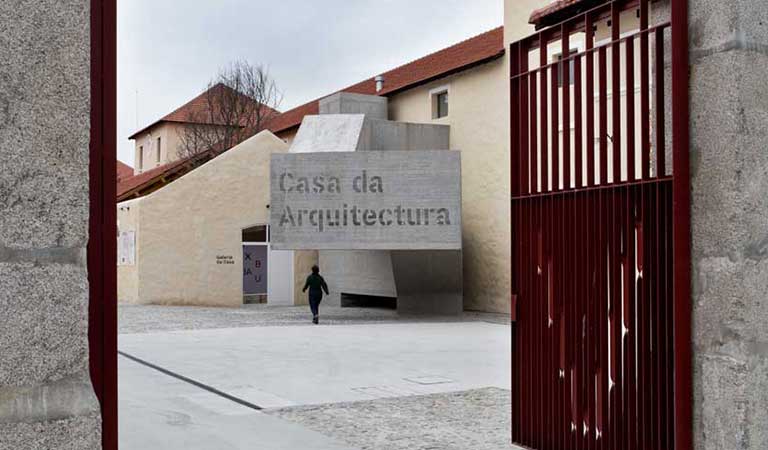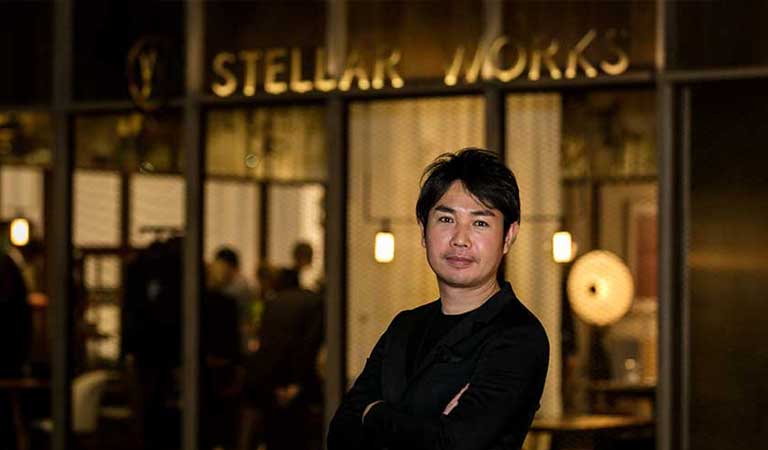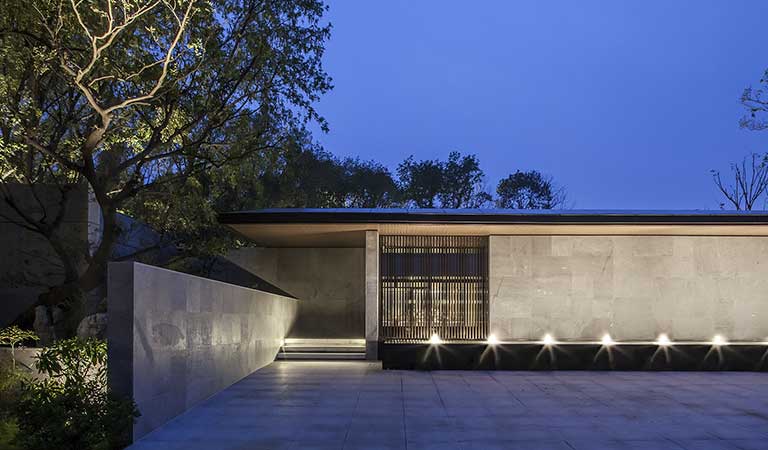In the scope of the Lisbon Architecture Triennale, the exhibition "Sines: Seaside Logistics" curated by Rui Madeira and Marta Labastida, brings together proposals from several Portuguese architecture and landscape universities.
Translating into an incisive look on the academic orientations that define the teaching of architecture in Portugal, Rui Madeira describes the process of designing this exhibition about the relationship between the city of Sines and its industrial and logistic elements.
No âmbito da Trienal de Arquitectura de Lisboa, a exposição “Sines: Logística à Beira-mar” com a curadoria de Rui Madeira e Marta Labastida, reúne propostas de diversas universidades de arquitetura e paisagismo portuguesas.
Traduzindo-se num olhar incisivo sobre as orientações académicas que definem o ensino da arquitetura em Portugal, Rui Madeira descreve-nos o processo de concepção desta exposição sobre a relação entre a cidade e a componente industrial e logística de Sines.
— Curator Rui Mendes —
This curatorship is shared with Marta Labastida, a Catalan architect who works in Porto for many years, and in Minho. We were informed by André Tavares and Diogo Seixas Lopes that we had a huge challenge, which was to promote a competition for all the architecture universities in the country.
We chose a site that is Sines, and first of all we established some criteria to invent this contest and to be able to, in a very objective and almost very appealing way, bring all the architecture schools to the contest. That was one of the great objectives, to have a large number of proposals that would bring a huge work force to this exercise and to an exhibition, which would be an important exhibition for the Triennale.
Esta curadoria é partilhada com a Marta Labastida, arquiteta catalã que trabalha no Porto à muitos anos, e no Minho. Foi-nos comunicado pelo André Tavares e pelo Diogo Seixas Lopes que tínhamos um enorme desafio, que era promover um concurso para todas as universidades de arquitetura do país.
Escolhemos um sítio que é Sines, e primeiro que tudo estabelecemos alguns critérios para inventar este concurso e poder de uma forma muito objectiva e quase muito apelativa, trazer todas as escolas de arquitetura para o concurso. Que era um dos grandes objetivos, era poder ter um grande número de propostas que trouxessem uma enorme força de trabalho a este exercício e a uma exposição, que seria uma exposição importante para a Trienal.
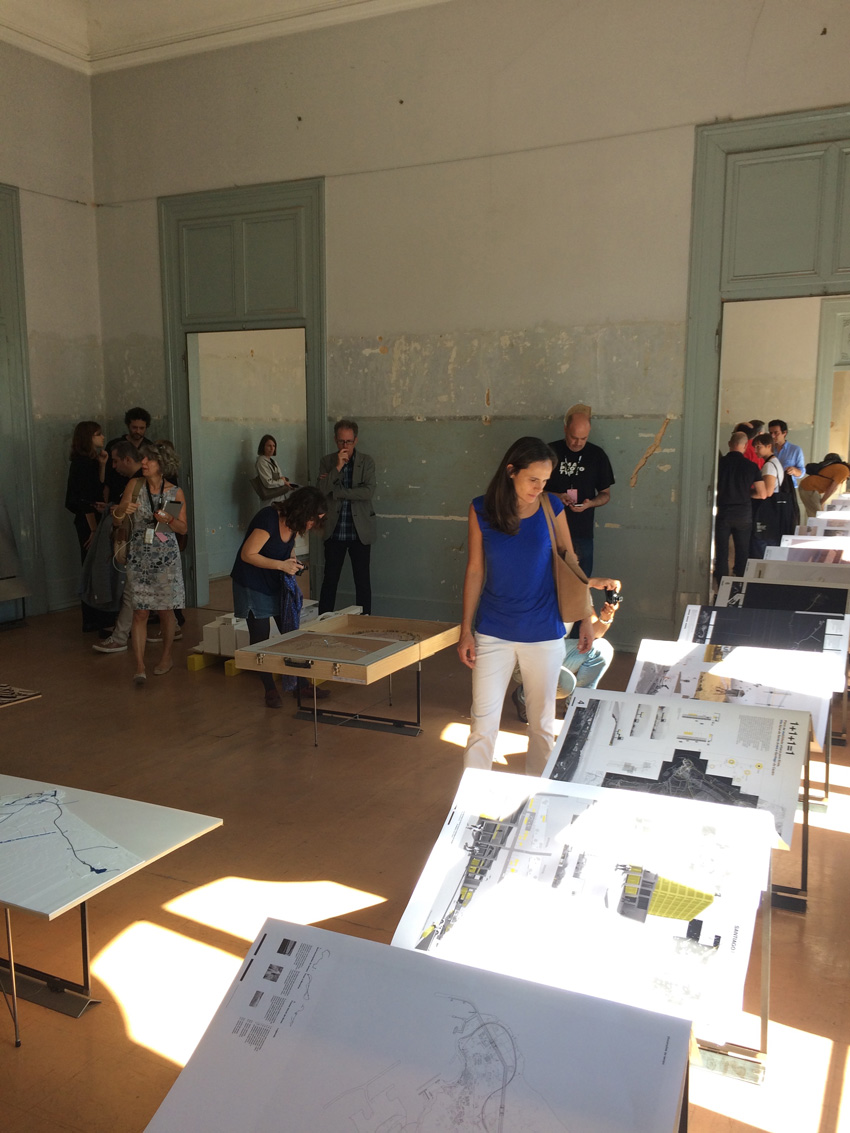
Sines: Seaside Logistics Exhibition
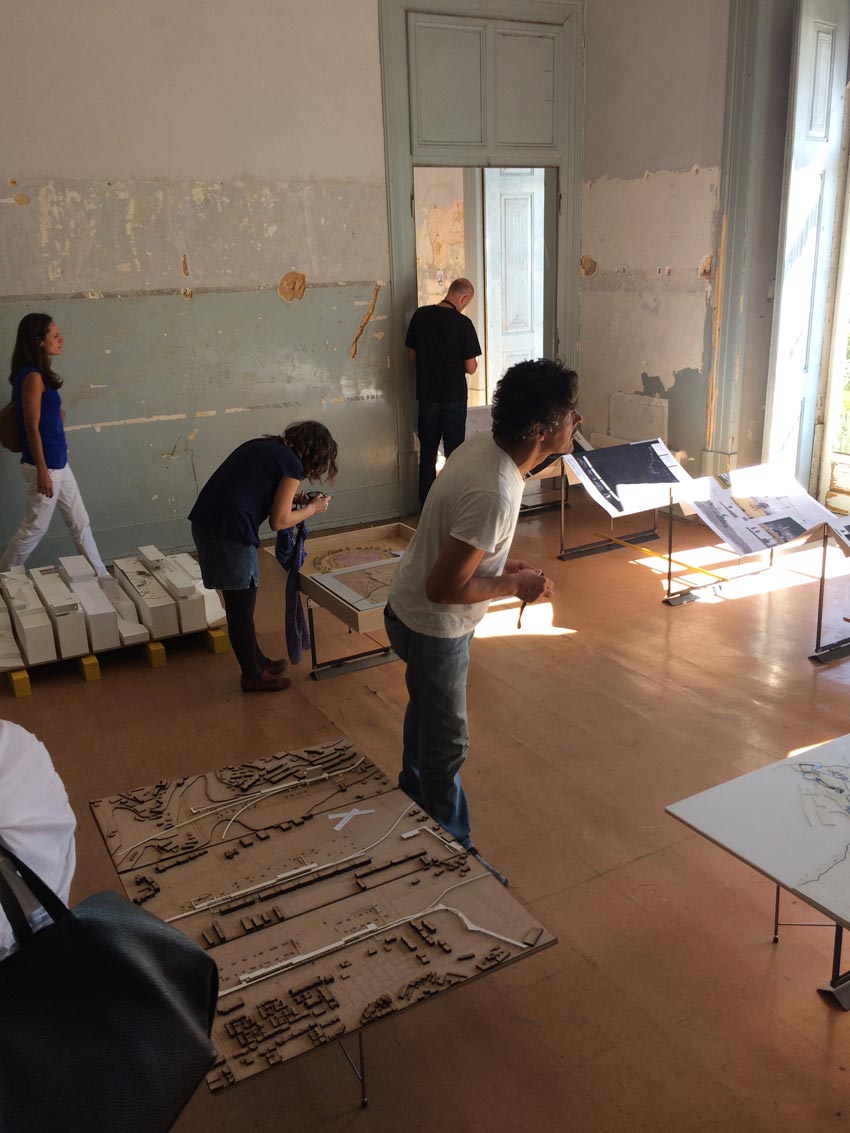
Sines: Seaside Logistics Exhibition
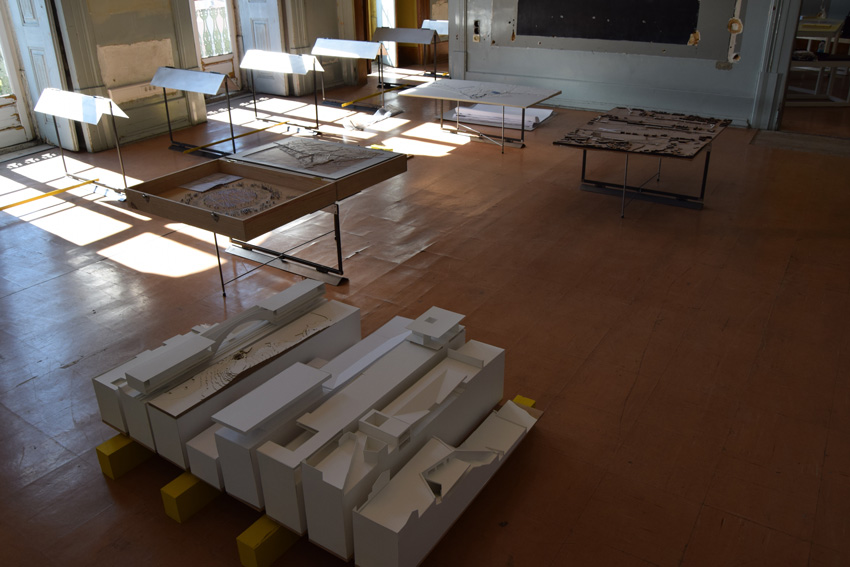
Sines: Seaside Logistics Exhibition
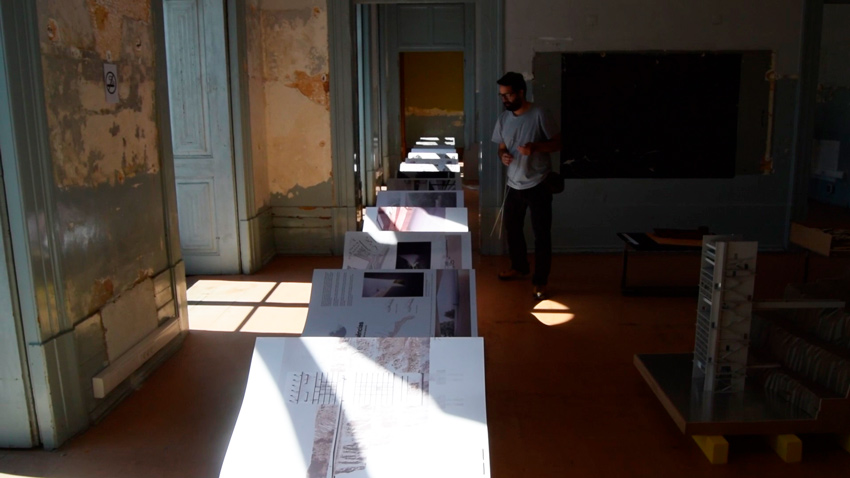
Sines: Seaside Logistics Exhibition
— SINES —
This decision on Sines had to do with several factors, with an incredible reality that is, a city in the twentieth century that goes from a small fishing town to a large industrial port. And that in spite of everything in 45 years didn’t go through great changes, so it got a bit we can say, short on the transformation that was anticipated, and these marks still persist in the territory today. So it was almost evident that we had to have an opportunity and this was frankly a great opportunity to do so.
And quickly the universities also thought it was a great work motive, they organized their 4th and 5th year students to do the work, in almost all the architecture schools of the country, there was a landscape school that also joined. And in addition we called the most important institutions of that territory, which are the Sines City Hall, the Thermoelectric EDP and the Port of Sines.
Essa decisão sobre Sines teve que ver com imensos factores, com uma realidade incrível que é, uma cidade no século XX que passa de uma pequena cidade de pescadores para um grande porto industrial. E que apesar de tudo em 45 anos não teve grandes movimentações, portanto ficou um pouco digamos que, aquém da transformação que era prevista, e essas marcas ainda persistem no território hoje. Portanto era quase uma evidência que havia que ter uma oportunidade e esta era francamente uma grande oportunidade para o fazer.
E rapidamente as universidades também acharam que era um óptimo motivo de trabalho, organizaram os seus estudantes de 4º e 5º ano para fazerem os trabalhos, em quase todas as escolas de arquitetura do país, houve uma escola de paisagismo que também aderiu. E para além disso convocámos as instituições mais importantes daquele território, que são a Câmara Municipal de Sines, a Termoeléctrica EDP e o Porto de Sines.
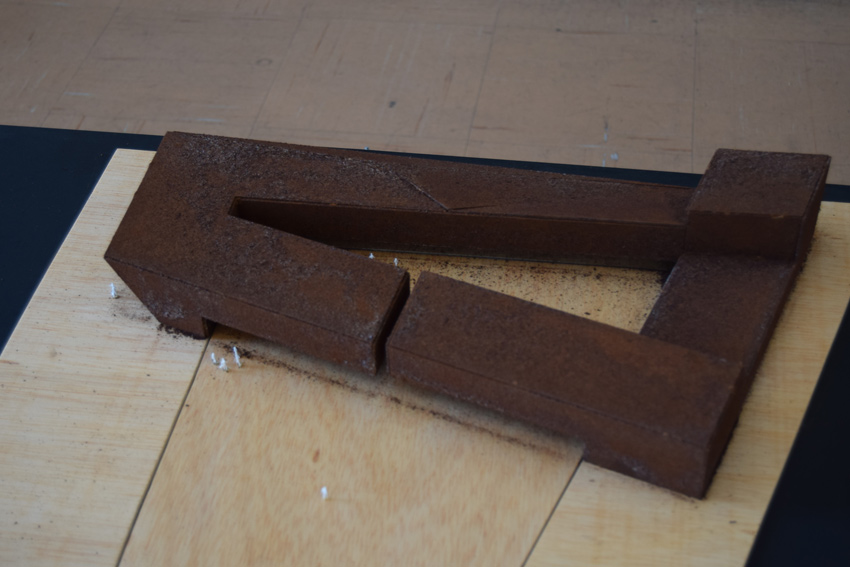
Sines: Seaside Logistics Exhibition
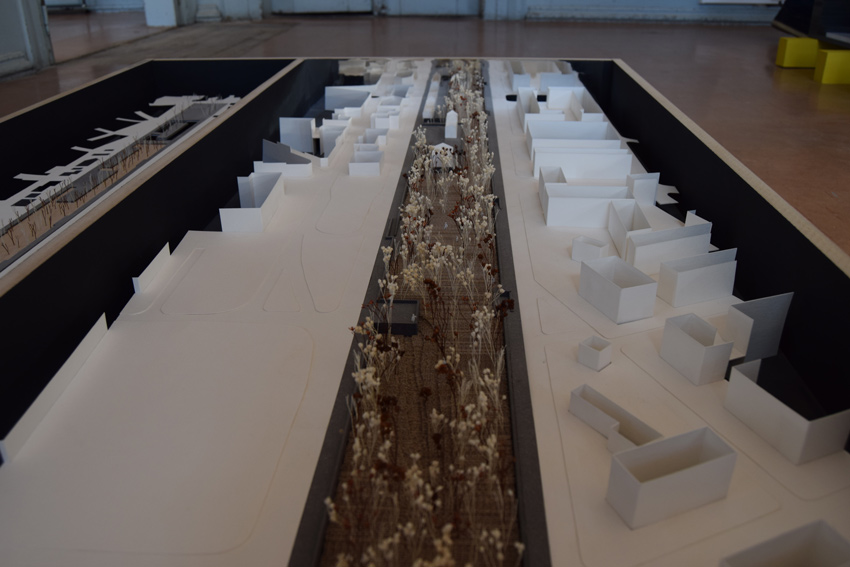
Sines: Seaside Logistics Exhibition
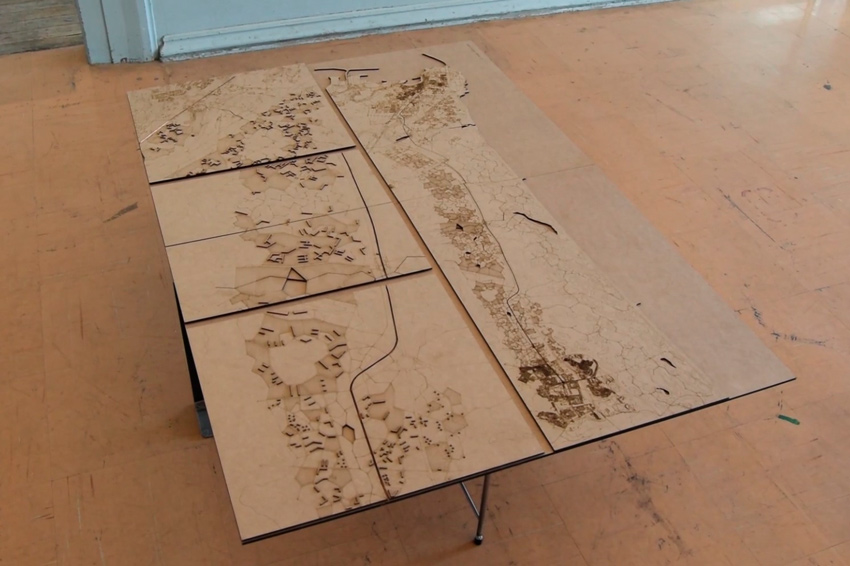
Sines: Seaside Logistics Exhibition
— Universities —
What we have detected, what we read in these works was that there are clearly three very important directions.
There are schools that privilege the idea of the building and therefore the relation of a piece, a drawing, a chosen site, an architectural language, a development, a program.
There are clearly other schools that are more interested in a broader base of the territory, deal more with systems, with infrastructure systems, linking systems, where they can then connect some small programs.
Other schools that are interested in working with things that are quite exploratory and utopian, that is, they do not foresee such an immediate relationship with current problems and therefore they can promote a discussion that projects more in time and in the unknown, so to speak.
And it was something we felt like there might be here too. This idea that if Sines was designed to have a great port to reach the all world, why can’t we also think of something that’s not for today, it’s for a few years from now.
O que nós detectámos, o que nós lemos nestes trabalhos todos foi que existem claramente digamos, três direcções muito importantes.
Há escolas que privilegiam a ideia do edifício e portanto a relação de uma peça, um desenho, um sítio escolhido, uma linguagem arquitetónica, um desenvolvimento, um programa.
Há claramente outras escolas que estão mais interessadas numa base mais abrangente do território, lidam mais com sistemas, com sistemas infra-estruturais, sistemas de ligações, onde depois podem conectar alguns pequenos programas.
Outras escolas que lhes interessa trabalhar com coisas até bastante exploratórias e utópicas, ou seja, não prevêem uma relação tão imediata com problemas actuais e portanto conseguem promover uma discussão que se projeta mais no tempo e no desconhecido digamos assim.
E era uma coisa que nos apetecia que de facto pudesse também haver aqui. Essa ideia que, se Sines foi projectado para ter um grande porto para chegar a todos os lados do mundo, porque é que não podemos pensar também em qualquer coisa que não é para hoje, é para daqui a uns anos.
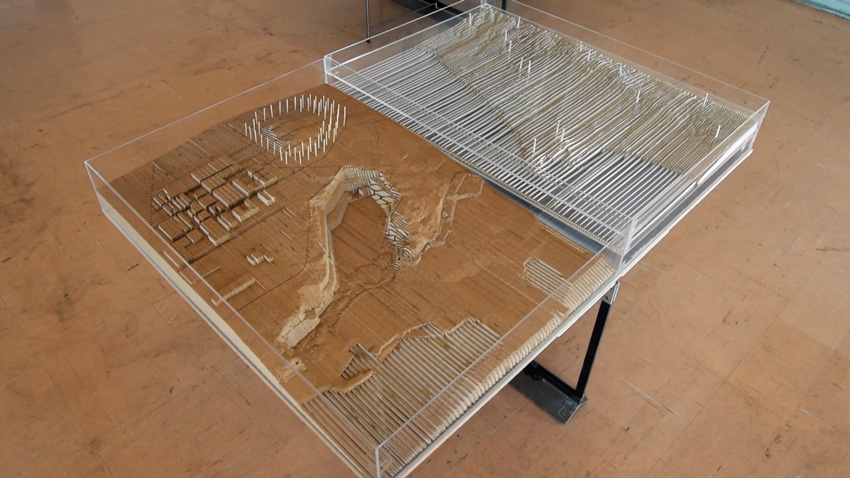
Sines: Seaside Logistics Exhibition
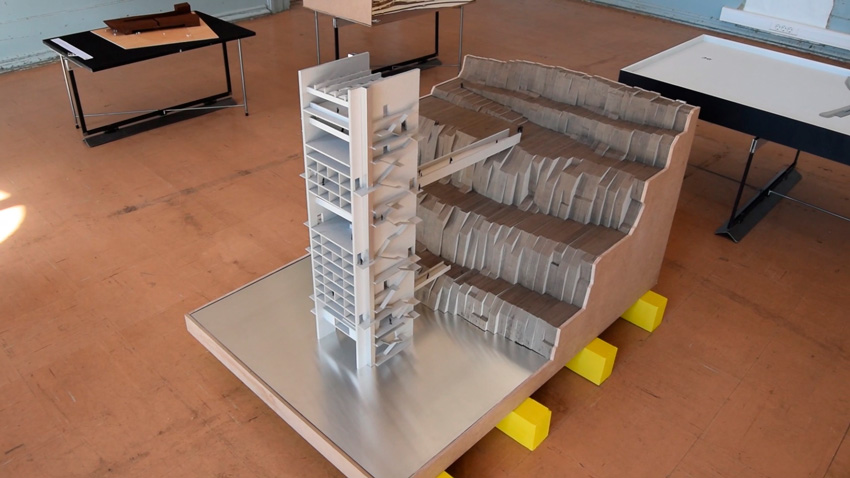
Sines: Seaside Logistics Exhibition
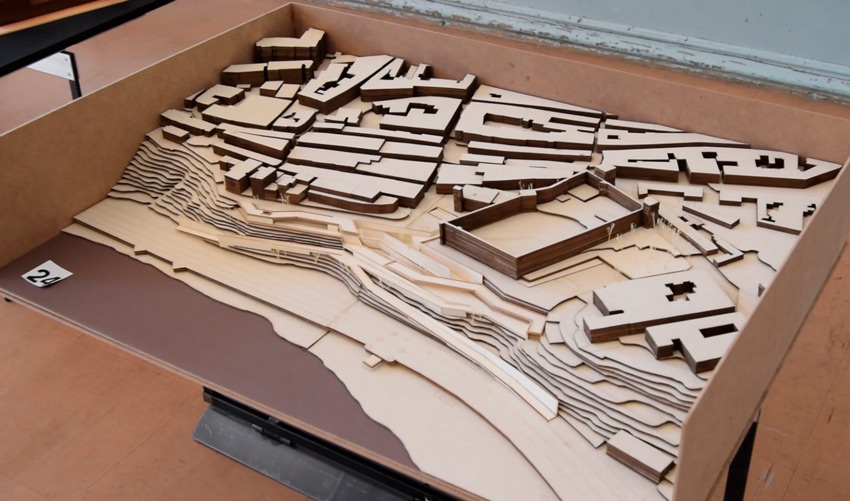
Sines: Seaside Logistics Exhibition
